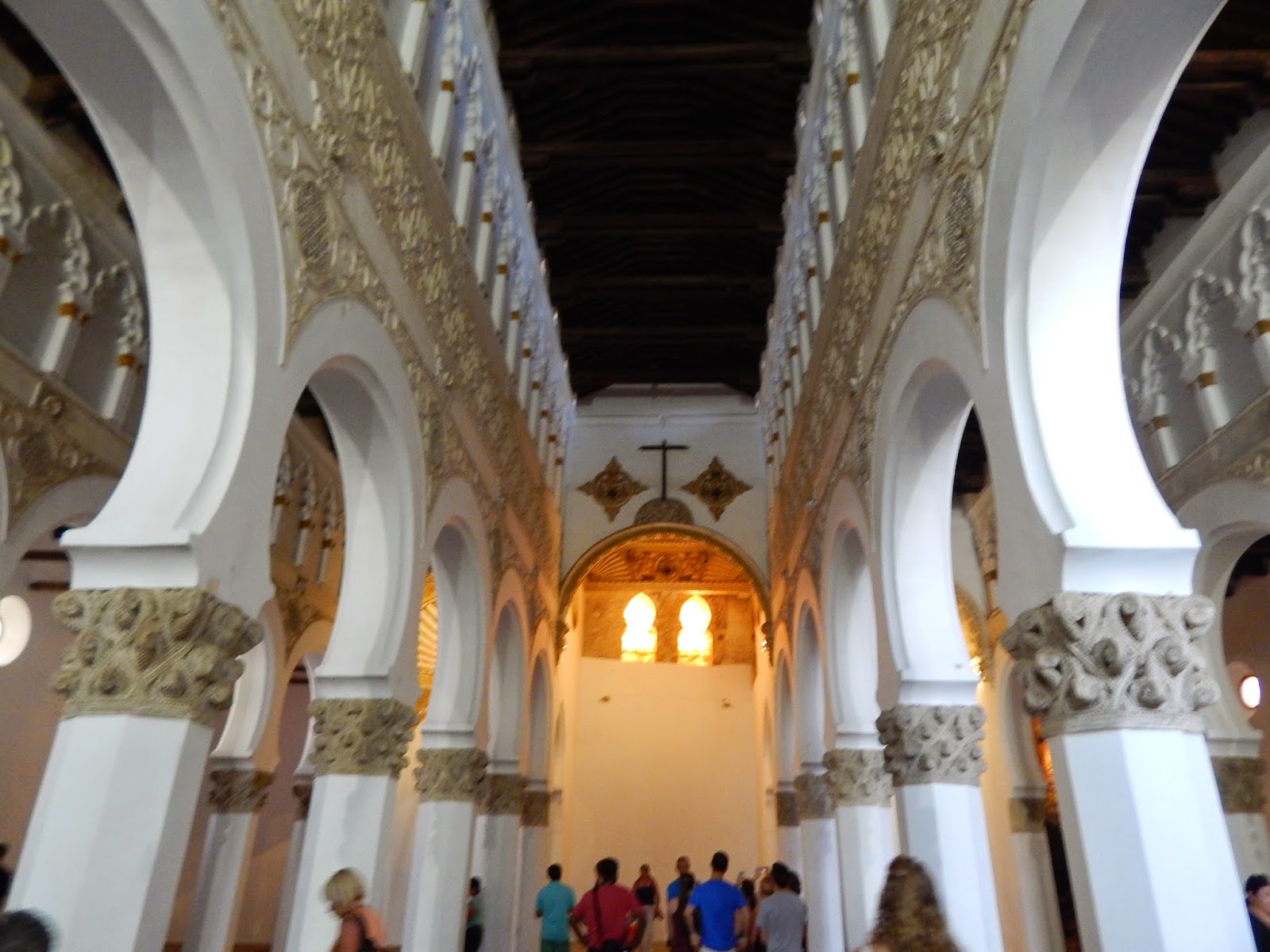I've been in Granada for a week now! ISA doesn't take us to the Alhambra until October so the picture above is from afar. I took it while we were walking to the Albaicín for our first flamenco show! You all sit in a long semi circle inside one of the cuevas gitanas (gypsy caves) where a group performs a show for about an hour. It was so cool! I think those people who dance it have to be monkeys. They have to dance, clap, stomp, and even play percussion instruments at the same time. It looks like it would be very overwhelming to learn. It is quite impressive, and so passionate. The flamenco guitarists are pretty insane too.
Below is a picture of the inside of the Centro de Lenguas Modernas (Center of Modern Languages) in Granada. It used to be a small palace back in the day so it is pretty!

I did end up getting into the level I needed to be in. However, I felt bad for 90% of the Spanish majors who needed to place into advanced and didn't. They pretty much require you to be fluent to score a level 7 of the 9. In order to be 9, you need to be at the level of a native-born speaker.
One of the hardest things in a foreign country (i'd imagine) is when you need medicine. When I was in Toledo, I had an allergic reaction to something in the air. I had a bad headache and felt like I couldn't breathe. I walked to the farmacia that the hotel person said was open, and it wasn't. I did my best not to start bawling walking back to the hotel, all while repeating a mantra that I was a big girl and could handle it. It's scary when it hits you that you are in a foreign country, you need something, and you don't know how or even if you can attain it. The people around you speak a different language and don't understand you, nor do you understand them. I think it's distressing enough to make anyone start crying;). However, ISA (the program I'm with) came to save the day and called a taxi to take me to the nearest 24 hour farmacia. Then, luckily, I knew the words to describe what was wrong.
Let me just say that spanish over-the-counter meds are BETTER than what is in America. I was skeptical, but I'm pretty sure this nasal spray is probably like prescription stuff in the US because it's worked better than any allergy medicine I've ever taken. Farmacias here are not like pharmacies in the US. You don't have medicine ads on the television and there aren't tons of the medicines to choose from for a medical problem. Most often, there is only one or two. There isn't generic. However, the nasal spray was about 6 euros. Oh and it didn't have directions. Luckily I could understand the pharmacist's verbal directions on how many times and when to take it.
I do like Granada, and I live in the area that is the center of shopping for Granada. Of course, even here, I like the most expensive things. My host mom was walking us to class the first day and pointing out which stores were 'barata' (cheap). I pick out a black, leather dress that I thought looked awesome and she said, "vale, pero esa tienda es cara" [Okay (or yeah), but that store is expensive]. By the way, if you don't know what to say in a spanish conversation, just say 'vale', that's what I do at least. Stare dumbly and say 'vale' (pronounced ba-leh).
Im hoping to find other things to do here besides sit around and drink sangria with tapas. It's cool at first but gets old. I do miss the food from Oklahoma. My host mom is a good cook, but I miss the food.
Ending on a positive note, my friends and I went to a little moorish beach village called Salobreña this past saturday. We just took an hour bus ride from Granada to there in the morning and back. It was SO MUCH FUN, and so breathtakingly beautiful. One of my friends started tearing up when she saw it. The Mediterranean Sea looks like something out of a story book, with the waves crashing against rocky cliffs and crystalline blue waters beating the shore. This picture is when we first saw the ocean as we were walking down through the village.
Then we had to walk down this slippery stone path along the shore line, it's cut into the rocks. You have to be careful to time where you're at so you don't get sprayed by the waves! The pale grey part of the rocks is the little path.
While we were walking to this spot where we could rent chairs
A friend and I climbed to the top of the big boulder that was there and I took this picture below and then the one below it.
If ever given the chance, go to a Mediterranean beach. Salobreña was beautiful. We were on the rocky side of the beach, but it was so peaceful. The sandy side was super crowded. We just layed in our chairs underneath thatch umbrellas and listened to the waves crashing against the shore.
¡Hasta pronto!










































